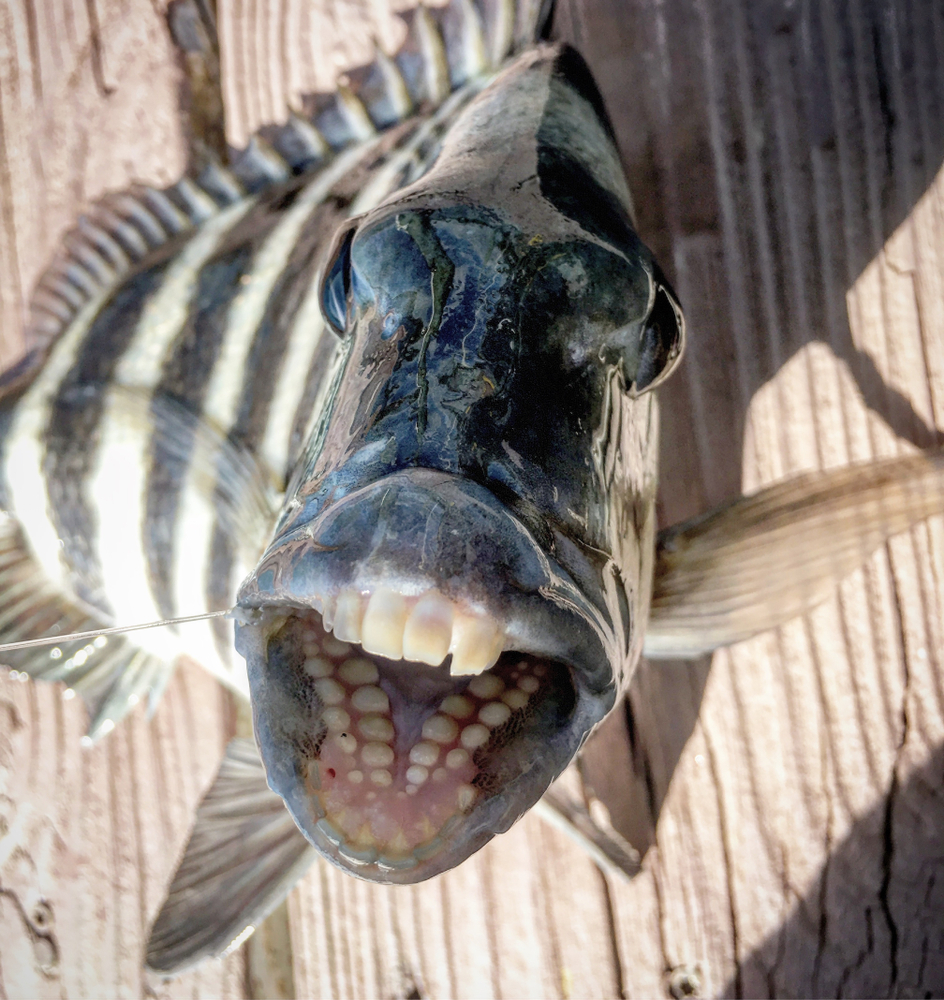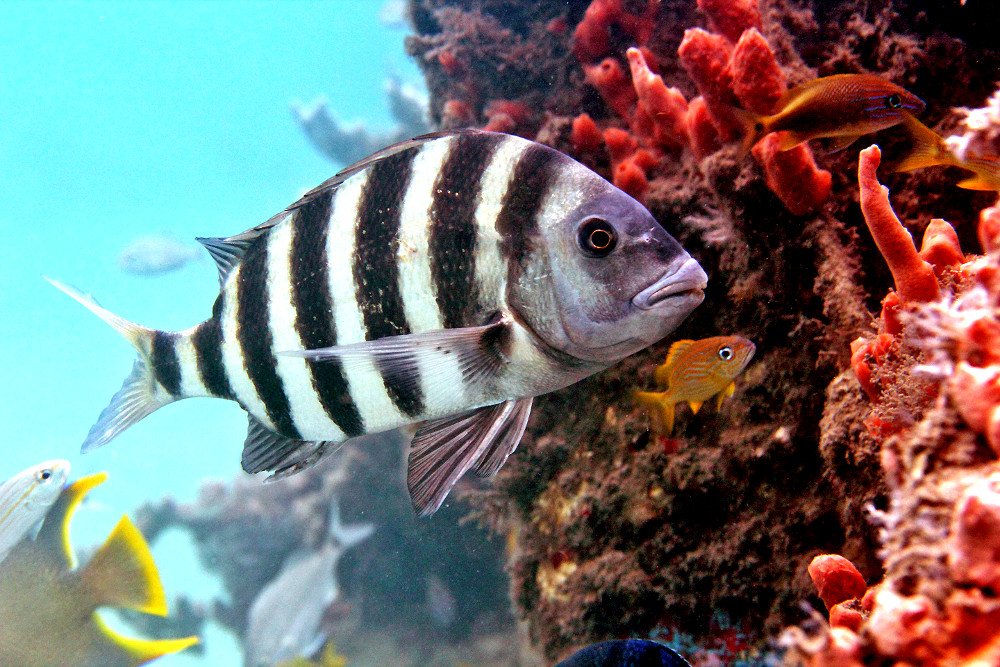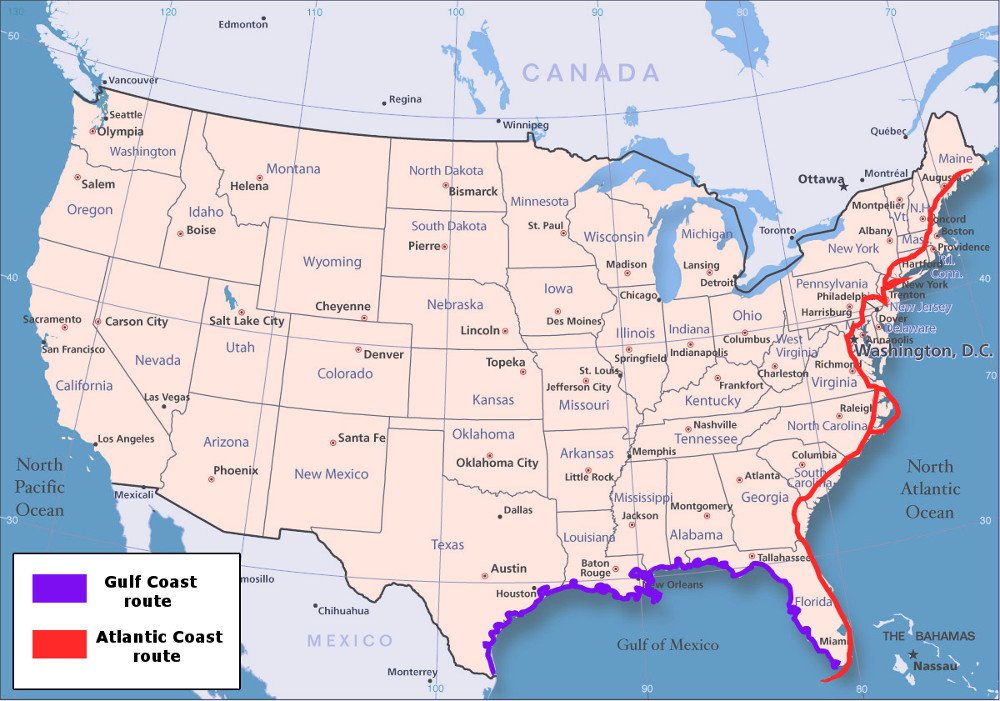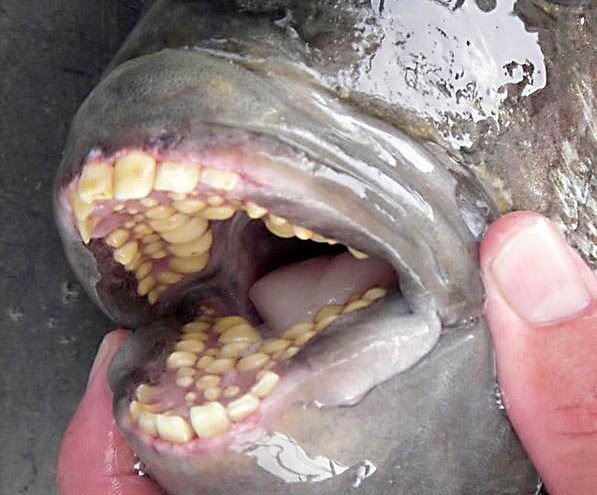Table of Contents (click to expand)
The sheepshead fish is a deep-bodied, compressed marine fish with sharp dorsal spines. The fish commonly reaches 10-20 inches, but can grow to be as large as 35 inches in some cases! It has a hard mouth and stubby teeth that bear a striking resemblance to human teeth.
One glance at the picture of a sheepshead fish might make you assume this fish has stolen a sailor’s lost pair of dentures from the seafloor! Yes, there is a fish whose teeth are eerily similar to humans.

The sheepshead fish is a deep-bodied, compressed marine fish with sharp dorsal spines. The fish usually grows 10-20 inches long but can sometimes grow to 35 inches! Before we talk about the unusual chompers of this quirky marine creature, let us learn about its appearance, anatomy, and habitat.
Sheepshead Fish Facts
This deep-bodied flatfish is commonly found in North and South America, usually weighing around 21.2 lbs (9.6 kg) and reaching 91 cm (35.8 inches) in length.

The term ‘sheepshead’ may refer to many things, including a few other fish species. Still, in this article, we only look at the species most commonly referred to as the sheepshead: Archosargus probatocephalus.
The sheepshead has limited commercial value, but it is especially known for possessing teeth that look incredibly similar to ours!
Also Read: What Are Pufferfish And Are They Toxic?
Sheepshead Anatomy
The back of the sheepshead is raised behind its head, which is sloping and deep in profile. It has a short snout with an almost horizontal and inferior mouth. Its scales are finely serrated, and it has sharp spines on the back. It is usually green-yellow or gray in color and marked with 5-7 vertical black bars. It is generally seen that the anal, ventral, and dorsal fins are black or gray, while the pectoral and caudal fins have a greenish hue.
Also Read: Why Don’t Fish Sink In Water?
Sheepshead Fish Habitat
Sheepshead fish is found on the Gulf and Atlantic coasts of the United States.

This fish is found from Cape Cod, Massachusetts, south through Florida (the greatest concentration of the sheepshead fish is found here), and from the Gulf of Mexico down to Brazil.
Sheepshead is a euryhaline species, meaning that they have been collected from waters with a salinity of between 0 and 35 PPT (parts per thousand). It is fairly close to the shore and feeds on shelled creatures when it does not spawn.
They thrive in brackish waters, especially at the confluence of rainwater runoff with salty estuaries. Because of their distinct feeding preference, sheepshead is vulnerable to extreme environmental fluctuations. Their tolerance to pollution and a reduced oxygen level is particularly low, and they tend to leave water bodies that get polluted. In Brooklyn, New York, there is a bay called Sheepshead Bay, named after this fish, but the namesake fish have left this bay due to an increase in their degree of pollution.

Adult sheepshead fish prefer habitats with some topographic relief and are also frequently spotted near oyster reefs, breakwaters, muddy shallows, wrecks, piers, and the Gulf of Mexico. Although the sheepshead fish is not truly migratory, they tend to move to offshore spawning grounds when the water temperature dips in late autumn and winter.
Sheepshead Fish Teeth
One of the most striking characteristics of the sheepshead fish is its teeth, which are amazingly similar to those we have in our mouths!
Take a look at the following picture:

As you can see, the anterior (front side) teeth of the sheepshead are incisor-like, while the posterior (backside) molar teeth are set further back. Sharp and thick teeth begin to appear when a sheepshead fish is just 4.5 mm long, and as soon as the fish becomes about 15 mm long, all incisors appear. At the same time, its rear teeth develop into adult molars.
There are two rows of molars on the lower jaw and three rows on the upper jaw. This heavy dentition allows sheepshead fish to crush and grind the shelled creatures that these fish prefer to feed on.
Fascinating as it is to see a row of “human teeth” on a fish, it’s a bit strange… isn’t it?
Sheepshead Fish Food
Sheepshead fish are omnivores and thus have a highly diverse diet. They can devour almost any kind of organic material found in the sea. These diverse feeders are known to consume small vertebrates, invertebrates, and plant material. Some studies have shown that they feed on over 100 different species!
A team of researchers in Mississippi discovered that 5-15 inch long sheepshead fish could eat mollusks. As they grew larger, they turned to other delicacies, including crabs, worms, fish, and other crustaceans. Interestingly, sheepshead fish fed heavily on them when seaweed and algae were abundant.
The diet of sheepshead fish does vacillate with location, weather, and food availability. Although mollusks are pretty much a staple food and are eaten almost all year round, sheepshead fish preferred to eat fish in spring, whereas in hot and arid summer, they preferred to eat plants and detritus. In spring, autumn and winter, sheepshead fish liked to dine on polychaete worms.
Many studies suggest that sheepshead plays an important role in maintaining the ecological balance of the oceans, particularly in regulating fauna on hard surfaces underwater, such as immobile barnacles or species that crawl or swim near the surface. Due to their predilection to consume species in abundance, sheepshead fish provide a key service, preserving the biodiversity of the water body.
Importance To Humans
Sheepshead fish are admired by food connoisseurs for their fine white flesh and mild palatable taste, although it is challenging to clean and cook the fish due to its heavy scales and strong spines. It is sold both fresh and deep-frozen and can be prepared by broiling, microwaving, and baking. Although the meat yield from a sheepshead fish is low, its taste is firm and flavorful.
How much do you know about the sheepshead fish?
Can you answer three questions based on the article you just read?

